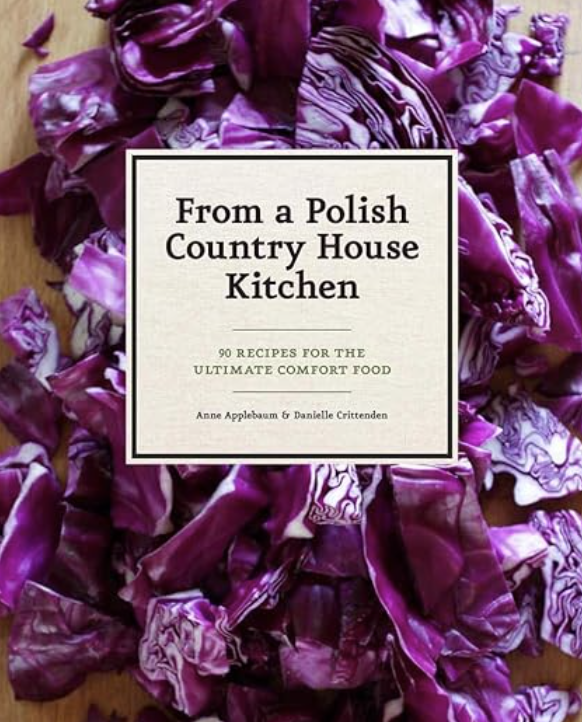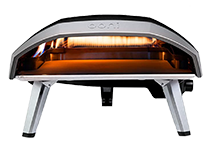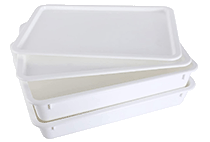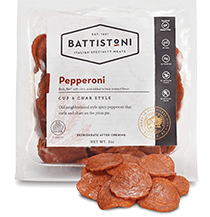Zapiekanki, often referred to as Polish pizza, is a popular and delicious dish originating from Poland. This open-faced sandwich is made with a baguette or a similar long roll, topped with a variety of ingredients, and baked until crispy and golden. As a staple of Polish street food, it is now enjoyed worldwide for its comforting flavors and versatility.
This beloved Polish snack has a rich history that dates back to the 1970s. Although initially a product of the Communist era, Zapiekanki quickly won over the hearts of Poles and tourists alike with its affordability and simplicity. The traditional version features a spread of sautéed mushrooms and onions, grated cheese, and a generous dollop of ketchup on top.
While there are many variations of Zapiekanki, the essence of the dish remains the same. Whether adding unique toppings, experimenting with sauces, or creating your own version at home, Zapiekanki remains a symbol of Polish culture and a delightful way to satisfy your taste buds.
Key Takeaways
- Zapiekanki is a popular Polish open-faced sandwich with a variety of toppings.
- It originated in the 1970s and remains a staple of Polish street food.
- There are many variations of the dish, making it versatile and easy to customize.
Table of Contents

What Is Zapiekanki Polish Pizza
Zapiekanki, often referred to as Polish pizza, is a popular street food in Poland that originated in the 1970s. At its core, it is an open-faced sandwich served hot and prepared by placing various toppings on a sliced baguette or similar long bread, then toasting or baking it until the cheese melts and the bread becomes crispy. The dish is typically served with a drizzle of ketchup or garlic sauce.
As a delicious and versatile snack, zapiekanki can be prepared with a wide range of toppings. Some common ingredients include:
- Cheese: The base of every zapiekanki is a layer of grated cheese, usually mozzarella, cheddar, or a mix of both.
- Mushrooms: A classic zapiekanki features sautéed mushrooms, typically champignons or porcini.
- Meat: Options like ham, bacon, sausage, and salami are popular additions.
- Vegetables: Many zapiekanki incorporate onions, peppers, tomatoes, olives, or pickles.
- Sauces: A final touch of ketchup, garlic sauce, or mayonnaise adds an extra burst of flavor.
The process of preparing zapiekanki includes assembling the ingredients on a baking sheet and placing it in a preheated oven or under a broiler. Depending on the size and desired crispness, the cooking time usually varies between 10 and 15 minutes. While the traditional zapiekanki uses a basic combination of cheese, mushrooms, and ham, the possibilities for customization are endless, making this snack a favorite among Poles and tourists alike.
In addition to being an open-faced sandwich, zapiekanki can also be prepared as a casserole-style dish, featuring layers of bread, cheese, and other ingredients baked together until bubbly and golden-brown. This variation is well-suited for gatherings and dinner parties, where the host can serve larger portions while still maintaining the essence of the beloved street food.
While not as widespread as the traditional pizza, the charm of zapiekanki lies in its simplicity and ability to cater to individual preferences. It embodies the comfort and versatility of Polish cuisine and has earned its rightful place among the country’s most popular dishes.
History of Zapiekanki
When I first encountered zapiekanki, it piqued my interest to learn about its origins. As a popular street food in Poland, the history of zapiekanki reveals much about the country’s cultural and political changes. This open-faced sandwich is often regarded as the Polish take on pizza, and its history can be traced back to the late 1970s.
During the Communist era, scarcity of supplies prompted individuals to come up with creative culinary solutions. In this challenging period, people in Eastern European countries like Poland relied on cheap and readily available ingredients to craft new dishes. That’s when the zapiekanka made its debut on the streets of Warsaw.
Common ingredients of the original zapiekanki were:
- A baguette, serving as the base
- Mushrooms
- Cheese
- Ketchup
Innovative street vendors then started topping their creations with additional elements, such as ham, onions, and pickles, to satisfy varying customer tastes. As the demand grew, so did the variety of toppings.
As communism fell and Poland transitioned to democracy, zapiekanki mirrored this shift. The assortment of ingredients expanded to include items like salami, olives, and even pineapple – something that would have been unimaginable during the earlier years of scarcity.
Anne Applebaum, a noted journalist and author, writes about Polish food and its evolution in her book From a Polish Country House Kitchen. She highlights the imprints left on Polish cuisine by its tumultuous history, including the impact that the Communist era had on zapiekanki.
Today, gourmet zapiekanki have emerged on the culinary scene, featuring high-quality ingredients and creative toppings. A far cry from their humble beginnings, modern zapiekanki are no longer limited to the basic versions sold in communist food stands. They have become a symbol of Polish gastronomy and a tangible representation of how far the country has come.
The history of zapiekanki is a testimony to the resilience and creativity of the Polish people. From its modest origins on the streets of Warsaw to the beloved and versatile dish it is today, the humble zapiekanka is truly a testament to the indomitable spirit of Poland.

Ingredients of a Traditional Zapiekanki
In my experience with making traditional Polish Zapiekanki, I have discovered that there are several key ingredients that make this half-baguette “pizza” unique and delightful. Here, I am going to list them and discuss a few variations.
First and foremost, the bread is a crucial component of any Zapiekanki. A crispy baguette is the preferred choice, as it provides the perfect base for all the toppings.
Toppings typically begin with a mixture of sautéed mushrooms, usually button mushrooms, and diced onions. These are cooked with a small amount of butter, then seasoned with salt and pepper to taste. Some prefer to add a hint of garlic to this mixture for extra flavor.
Cheese is the next essential ingredient, often giving Zapiekanki its “pizza-like” appearance. Mozzarella is a popular choice, but it’s also common to use a blend of various cheeses, such as gouda, cheddar, or the traditional Polish oscypek. The cheese is sprinkled over the mushroom and onion mixture, then melted under a broiler or in an oven.
Meat lovers can customize their Zapiekanki with a wide variety of options. Ham, bacon, salami, or even sliced sausage can be added atop the mushrooms and cheese for a hearty meal.
To finish off the dish, a generous drizzle of ketchup is often applied, giving the Zapiekanki a tangy, sweet flavor profile. However, if you prefer a more complex taste, there are a variety of other toppings that can be added. Some popular choices include:
- Pickles: A staple in many Polish dishes, pickles add a zesty and refreshing crunch to the Zapiekanki.
- Olives: A common addition for a Mediterranean twist, olives provide a briny, salty contrast to the dish.
- Corn: For a touch of sweetness, tender corn kernels can be sprinkled on top of the cheese.
- Feta cheese: A small amount of crumbled feta cheese adds a tangy, salty note
- Chives: Sprinkled on top of the finished Zapiekanki, fresh chives provide a subtle onion flavor and a pop of color.
There you have it – the essential ingredients for a traditional Polish Zapiekanki. While this list offers several variations, feel free to experiment with your own favorite ingredients and enjoy a uniquely delicious treat.
Baking and Serving Zapiekanki
When I make Zapiekanki, I begin by preheating my oven to 200°C (400°F), allowing it to heat up while I prepare the toppings. An essential part of Zapiekanki is its crisp bread base. To achieve this, I place a baking sheet in the oven to warm up while I prepare the toppings.
Once the oven is heated, I carefully remove the baking sheet and start assembling the Zapiekanki. I begin by spreading a base layer of sauteed mushrooms on the half baguette, ensuring an even distribution. This layer adds a flavorful, earthy taste to the dish.
Next comes the protein layer. You can choose from various options, such as ham, bacon, or sausage. I personally like to use thinly sliced ham as it adds a nice balance to the mushrooms and cheese.
After arranging the protein layer, I sprinkle on a generous amount of grated cheese, making sure every inch of the baguette is covered. A good choice of cheese would be mozzarella or cheddar, as they melt well and achieve that iconic golden brown color when baked.
Before placing the baguette in the oven, I like to add a pinch of black pepper for an extra kick. Once everything is prepared, I carefully transfer the Zapiekanki onto the heated baking sheet and place it back in the oven.
The key to a perfect Zapiekanki is to let it bake for approximately 15-20 minutes, or until the cheese is thoroughly melted and the crust turns golden brown. Here’s a quick summary of the baking process:
- Preheat oven to 200°C (400°F).
- Warm up the baking sheet in the oven.
- Spread sauteed mushrooms onto the half baguette.
- Add your choice of protein.
- Cover with a generous amount of cheese.
- Sprinkle black pepper, if desired.
- Bake for 15-20 minutes or until golden brown.
Upon removing the Zapiekanki from the oven, allow it to cool slightly before serving. I like to slice mine into smaller pieces for easy sharing. This comforting Polish dish proves that delicious food can be both simple and satisfying. Enjoy!
Nutritional Information and Health Benefits
When it comes to the nutritional information, a typical Zapiekanki provides a balanced blend of macronutrients you need for energy. Let me give you a quick rundown of what you can expect from an average serving (around 250g):
- Calories: 550 kcal
- Fat: 25g
- Protein: 20g
- Carbohydrates: 62g
Now, let’s delve deeper into the benefits this Polish pizza can offer. One of the health benefits is its protein content, which mostly comes from the cheese and mushrooms. Protein is essential for muscles, bones, skin, and even our hormones. So, having a meal that is rich in protein can definitely be beneficial.
Moreover, Zapiekanki contains dietary fiber, which comes from the mushrooms and whole wheat baguette that is often used as the base. Fiber is important for maintaining a healthy digestion, preventing constipation, and lowering the risk of heart disease.
Aside from these macronutrients, it also provides a variety of vitamins and minerals, such as:
- Vitamin B complex: From the mushrooms and bread; supports energy production and brain function
- Vitamin C: From the peppers and tomatoes; strengthens the immune system and promotes healthy skin
- Calcium: From the cheese; essential for strong bones and teeth
However, it’s important to note that the nutritional content of Zapiekanki may vary depending on the additional ingredients used. Customizing and opting for healthier options, like whole wheat bread and adding more veggies, can enhance the nutritional value of this dish.
Lastly, Zapiekanki is relatively high in sodium, so it’s worth keeping an eye on your daily intake, especially if you have high blood pressure or other health concerns related to sodium consumption.
In conclusion, while Zapiekanki might not be the healthiest food choice, it provides a balanced mix of macronutrients and nutrients when enjoyed in moderation. By customizing the ingredients, you can ensure it fits well into a well-balanced, nutritious diet.
Variations of Zapiekanki
In my exploration of Zapiekanki, I have discovered that this delicious Polish pizza comes in a variety of flavors and toppings, providing endless possibilities for both vegetarians and meat-eaters alike. Let me walk you through some popular variations that you might want to try:
Traditional Zapiekanki: Made on half a baguette, this classic version typically consists of sautéed mushrooms, melted cheese, and ketchup. Rich in umami flavors, it’s a favorite among locals and tourists alike.
Vegetarian Zapiekanki: For those who avoid meat, there are plenty of vegetarian options. Here, I’ll list some popular choices and their main toppings:
- Roasted Vegetables: Made with bell peppers, zucchini, eggplant, and tomatoes.
- Spinach and Feta: A Greek-inspired twist, featuring spinach, feta cheese, and sometimes olives.
- Pineapple and Corn: This Hawaiian-style Zapiekanki offers a sweet and savory experience. The presence of canned corn and pineapple sets it apart from traditional versions.
French Bread Pizza Variation: Although not entirely authentic, you can try making Zapiekanki on French bread for a slightly different experience. The baguette’s crispier texture adds an interesting twist to the dish.
Bold Flavor Combinations: Don’t be afraid to get creative and mix different toppings to create your own masterpiece. Here’s an example:
- Meaty Hawaiian-Style: Combine the sweetness of pineapple with the saltiness of ham for a truly unique Zapiekanki experience.
Regardless of the variation you choose, your Zapiekanki is sure to delight your taste buds. So don’t be afraid to experiment and find your personal favorite combination.
Zapiekanki as Polish Street Food
As a Polish street food enthusiast, I can confidently say that Zapiekanki holds a special place in the world of snacks. Commonly known as a Polish take on French-bread pizza, these open-faced sandwiches are a delicious and relatively quick meal to enjoy on-the-go.
Zapiekanki is unique for a number of reasons; for starters, it’s cheap, filling and caters to diverse taste preferences. Based on my experiences trying various street foods, I learned that typical toppings include:
- Sautéed mushrooms
- Cheese
- Onions
- Ham
- Peppers
While these are some traditional variants, modern adaptations have led to more adventurous toppings like bacon, chickpeas and even avocado. However, it’s important to remember that no Zapiekanka is complete without its signature finishing touch: the drizzle of ketchup.
Not only does this street food cater to individual tastes, but its preparation time is also minimal. On the bustling streets of cities like Warsaw or Krakow, vendors can whip up this fast food within minutes, making it a popular choice for busy people on the move. The speed at which these treats are assembled demonstrates the efficiency of street food culture in Poland.
To give you an even clearer view of what Zapiekanki really is, let’s break down its composition:
| Mushroom Toast | Polish Street Food |
|---|---|
| Base | French-bread |
| Toppings | Mushrooms, Cheese, Onion, Ham, Peppers |
| Finishing Touch | Drizzle of Ketchup |
From these details, it’s easy to see how Zapiekanka has solidified its place as an iconic Polish street food. So, the next time you find yourself craving a quick yet delicious snack, give this unforgettable open-faced sandwich a try – I know I will!
Zapiekanki in Contemporary Cuisine
In my experience of exploring and enjoying various cuisines, I have come across zapiekanki, a type of Polish pizza that has gained considerable popularity in recent years. This delicious, open-faced sandwich is usually topped with sautéed mushrooms, melted cheese, and garnished with ketchup. Today, I will share some insights about zapiekanki in contemporary cuisine, including tips on cooking and maintaining authenticity.
A crucial aspect of preparing a great zapiekanki is to use fresh ingredients. The microwave just doesn’t cut it for me; a traditional oven is ideal for maintaining the authentic taste and texture. Here are a few cooking tips for zapiekanki:
- Preheat oven to 425°F (220°C)
- Spread a thin layer of mayonnaise on the bread of your choice (such as a baguette)
- Layer sautéed mushrooms, onions, and your choice of cheese
- Bake in the oven for about 10-15 minutes or until the cheese is bubbly and golden
- Let it cool for a few minutes before adding a drizzle of ketchup and chopped green onions or chives
As with many dishes, variation is key in making zapiekanki a continued favorite. Modern zapiekanki recipes incorporate a wide variety of toppings beyond the traditional mushroom and cheese combination. Some popular choices include:
- Meat: ham, sausage, bacon, or chicken
- Vegetables: bell peppers, tomatoes, olives, spinach, or arugula
- Cheese: cheddar, mozzarella, goat cheese, or feta
- Sauces: garlic sauce, BBQ sauce, or sour cream
The key to serving a delicious and authentic zapiekanki lies in the balance between tradition and innovation. Don’t be afraid to experiment with different toppings and combinations, but remember that the traditional oven-baked method of cooking elevates the dish’s overall taste and texture. As you explore and enjoy this popular Polish snack, you’ll find that zapiekanki is a versatile dish that adapts to your preferences and taste palate while keeping its roots in authentic flavors.
How to Cook Zapiekanki at Home
When I want to enjoy Zapiekanki, a delicious Polish-style pizza, at home, I follow this simple recipe. To start, here are the ingredients I gather:
- 1 long baguette or Ficelle, halved
- 1 cup chopped mushrooms
- 1 onion, chopped
- 1/2 cup chopped bacon (optional)
- 1 cup shredded cheese (combination of mozzarella, Edam, or any other grated cheese)
- 1/4 cup feta cheese (optional)
- 1/4 cup sweet corn kernels (optional)
- Ketchup, for drizzling
- Chopped parsley, for garnishing
First, I preheat my oven to 375°F (190°C). While it’s warming up, I sauté the onions, mushrooms, and bacon (if using) in a pan over medium heat for about 7-10 minutes or until the onions are translucent and the mushrooms have softened. To add extra flavor, I season the mixture with salt and pepper to taste.
Once my toppings are ready, I arrange the halved baguette on a baking sheet and layer the sautéed veggies and bacon evenly on top. Then, I sprinkle a generous amount of the grated cheese mix, as well as feta cheese and corn if I’m including them in my zapiekanka.
When my oven is heated, I place the baking sheet in the oven and bake for about 10-12 minutes or until the cheese has melted and turned golden brown. After removing the zapiekanka from the oven, I drizzle ketchup on top and garnish with chopped parsley to elevate the flavors. Finally, I slice my delicious Zapiekanki into pieces and serve!
This recipe can be easily modified to include various ingredients to suit your taste. The classic zapiekanka z serem i pieczarkami (zapiekanka with cheese and mushrooms) can be reinvented with different kinds of cheese and additional toppings. Just remember to be creative and enjoy this tasty Polish treat!
Conclusion
In conclusion, Zapiekanki, often referred to as Polish pizza, is a delicious and popular street food item in Poland. With its crunchy baguette base and variety of toppings, this dish provides a unique spin on traditional pizza.
The basic recipe consists of:
- Baguette
- Mushrooms
- Onion
- Cheese
- Ketchup
However, the customization options are seemingly endless. You can add various toppings such as:
- Sausage
- Ham
- Vegetables
- Spices
- Different types of cheese
Fun fact: Zapiekanki became popular during the 1970s and 1980s, and continue to be a staple in Polish cuisine today.
In my experience, one of the best places to try Zapiekanki is at Plac Nowy in Kraków, where numerous stalls offer a wide range of flavors and combinations to satisfy any craving.
If you are interested in making Zapiekanki at home, it’s quite simple. Just procure your desired ingredients and prepare the dish by following these steps:
- Preheat the oven to 180°C (350°F).
- Slice the baguette lengthwise and toast until crispy.
- Sauté mushrooms and onions in a pan.
- Top the baguette halves with sautéd mushrooms and onions, cheese, and any other desired toppings.
- Bake in the oven until cheese is melted and bubbly.
- Remove from oven, drizzle with ketchup, and slice into smaller pieces for serving.
Zapiekanki, being both customizable and easy to prepare, is perfect for those who appreciate pizza with a twist. Whether you try it on the streets of Poland or enjoy it from the comfort of your own home, this scrumptious dish will undoubtedly leave you wanting more.
Frequently Asked Questions
What are the traditional toppings for Zapiekanki?
The traditional toppings for Zapiekanki include sautéed mushrooms, melted cheese, and a ketchup-based sauce. Some variations may also have ham, onions, or other vegetables. The toppings may vary depending on personal preferences or regional specialties.
How do you properly pronounce Zapiekanki?
To pronounce Zapiekanki correctly, you can break it down into four syllables: za-pie-kan-ki. The stress is on the second syllable (‘pie’), and the ‘k’ is pronounced as a hard ‘k’ sound. So, the proper pronunciation is “za-PIE-kahn-kee.”
What is the difference between Zapiekanki and traditional pizza?
Zapiekanki and traditional pizza share some similarities, such as both being open-faced and topped with various ingredients. However, the major differences lie in the base and toppings. Zapiekanki is made on a baguette or a long roll, while pizza uses a round, yeast-based dough. Also, Zapiekanki typically has fewer and more simple toppings, unlike pizza that can have numerous and diverse ingredients.
Can you use kielbasa as a topping on Zapiekanki?
Yes, you can use kielbasa as a topping on Zapiekanki. Kielbasa, or Polish sausage, is a popular ingredient in Polish cuisine and can make a delicious addition to Zapiekanki. Just make sure to slice it thinly and cook it before adding it to your dish.
Is Zapiekanki considered a popular Polish street food?
Zapiekanki is indeed a popular Polish street food, especially in cities like Kraków and Warsaw. It is a quick, affordable, and tasty option for people looking for a satisfying meal on the go. You can often find vendors selling Zapiekanki at food stands or markets.
What are some other popular Polish dishes, like Pyzy?
In addition to Zapiekanki and Pyzy (dumplings filled with meat or potatoes), other popular Polish dishes include Pierogi (dumplings with various fillings), Placki ziemniaczane (potato pancakes), Bigos (a hearty stew made with sauerkraut, fresh cabbage, and various meats), and Żurek (a sour rye soup). These dishes provide a delicious introduction to the rich and diverse world of Polish cuisine.













